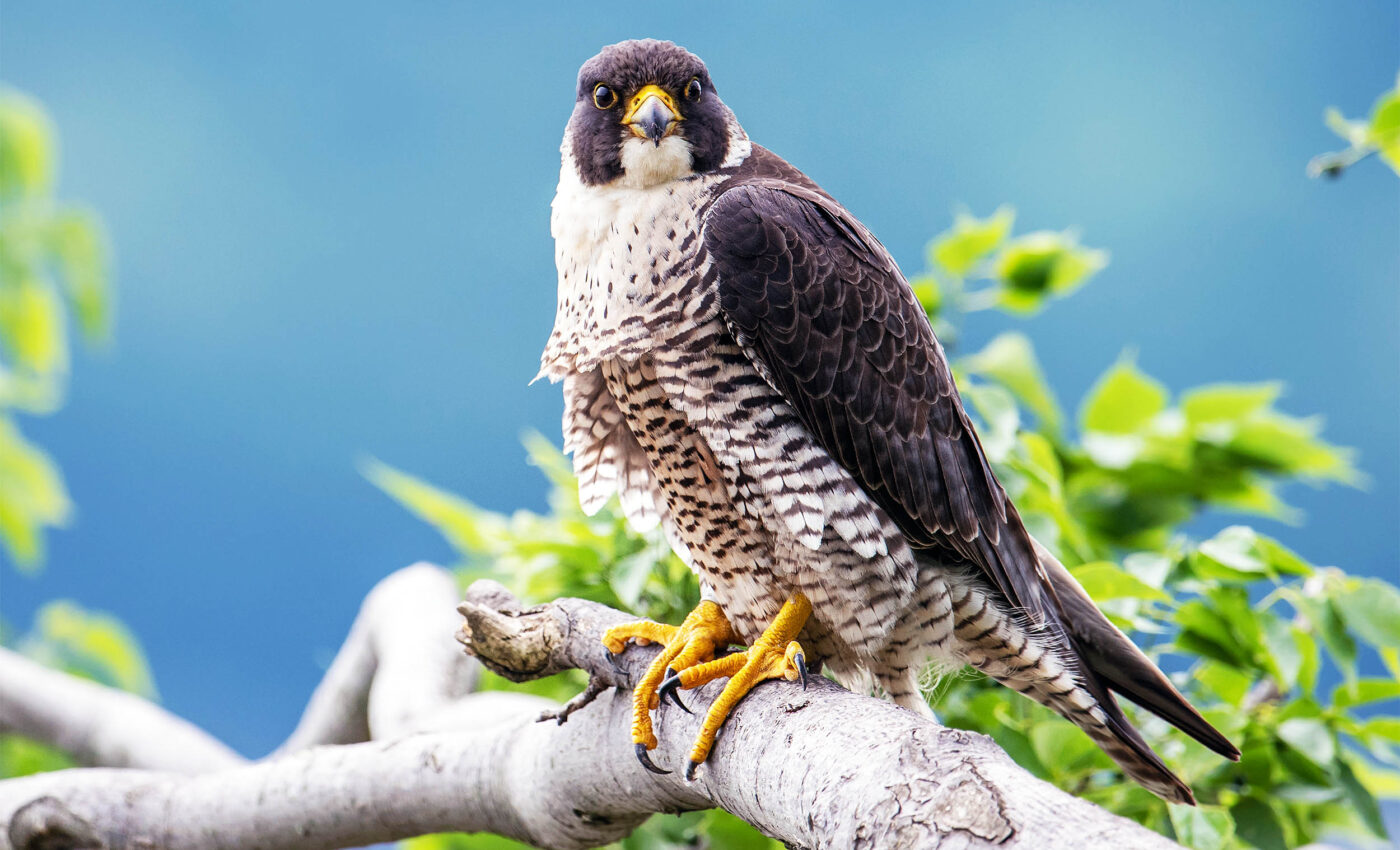
Peregrine falcons suffer long-term harm from chemicals in consumer products
A new study led by an international team of scientists has revealed that peregrine falcons across North America are burdened with a legacy of pollution from flame retardants, chemicals added to various consumer products to meet flammability standards.
Despite their intended safety purpose, these chemicals often fail to perform and have a propensity to leach into the environment, posing risks to wildlife and humans alike. According to the experts, falcons are still accumulating flame retardants that have been discontinued for years.
Long-term consequences of flame retardants
“Our results expose the long-term consequences of adding flame retardants to consumer products,” said senior author Da Chen, a scientist at Jinan University.
“As globally distributed apex predators, the peregrine falcon is the ideal canary in the coal mine for monitoring flame retardant pollution in the environment. Flame retardants phased out a decade ago are still accumulating in these birds and into their eggs, which indicates that the threats of these chemicals to wildlife and people can far outlast their production.”
Contaminated peregrine falcon eggs
The study, the most comprehensive of its kind in terms of both time span and geographical coverage, analyzed peregrine falcon eggs collected from various locations across the US and Canada between 1984 and 2016.
The researchers found that polybrominated diphenyl ethers (PBDEs) were not only the most detected flame retardants but also had the highest concentrations in the eggs.
While the production of major PBDE mixtures ceased in North America well before the study period ended, their presence in falcon populations did not diminish. Similarly, hexabromocyclododecane (HBCDD), another flame retardant phased out since 2012, was found in the majority of eggs, with concentrations showing no signs of decreasing.
Persistence of flame retardants
The persistence of these chemicals in the environment is attributed to their release from products manufactured before their phase-out and their accumulation through food chains, affecting apex predators like peregrine falcons. The findings underscore the inefficacy of simply ceasing the production of harmful substances without addressing their long-lasting impact.
Although regulated halogenated flame retardants remained prevalent or even increased, the use of non-halogenated and polymeric flame retardants has risen as alternatives. However, these substances appear to be also linked to health and environmental concerns.
Many species are impacted
The issue of flame retardant pollution is not exclusive to peregrine falcons. The Green Science Policy Institute has documented over 150 species worldwide, from killer whales to red pandas and chimpanzees, contaminated with both old and new flame retardant chemicals.
This widespread contamination highlights the urgent need for reevaluating the use of flame retardants in consumer products and the importance of finding safer alternatives to protect both wildlife and human health.
More about peregrine falcons
Peregrine falcons are among the most widely recognized birds of prey and are notable for their remarkable speed and agility. These birds are medium-sized falcons that are not only admired for their hunting prowess but also for their breathtaking flying abilities.
Appearance
Peregrine falcons have a distinctive appearance, characterized by a blue-grey back, barred white underparts, and a black head with large, dark eyes. One of the most striking features of the peregrine falcon is its incredible speed; during a hunting dive, known as a stoop, it can reach speeds over 200 miles per hour, making it the fastest animal in the world.
Distribution
Peregrine falcons are found all over the world, inhabiting a wide range of environments including urban areas, where they nest on tall buildings and bridges, as well as more traditional cliff-side habitats. Their adaptability to different environments is one reason for their global presence. They feed primarily on other birds, which they catch in mid-air with a stunning display of aerial agility.
Conservation of peregrine falcons
These falcons have played a significant role in human culture and falconry for thousands of years, revered for their speed, intelligence, and hunting skills. Conservation efforts in the late 20th century have helped recover peregrine falcon populations that were once threatened by pesticide use, particularly DDT. Today, they are considered a conservation success story, with strong populations in many parts of the world.
Reproduction
Peregrine falcons mate for life and are known for their impressive aerial courtship displays. They typically nest in a scrape, usually on cliff edges or, in urban environments, tall structures. The female lays a clutch of eggs, which both parents then incubate and care for once hatched.
The recovery of the peregrine falcon from the brink of extinction is not just a testament to the resilience of this remarkable bird but also a powerful example of how concerted conservation efforts can lead to the recovery of a species.
The study is published in the journal Environmental Science & Technology.
—–
Like what you read? Subscribe to our newsletter for engaging articles, exclusive content, and the latest updates.
Check us out on EarthSnap, a free app brought to you by Eric Ralls and Earth.com.
—–













